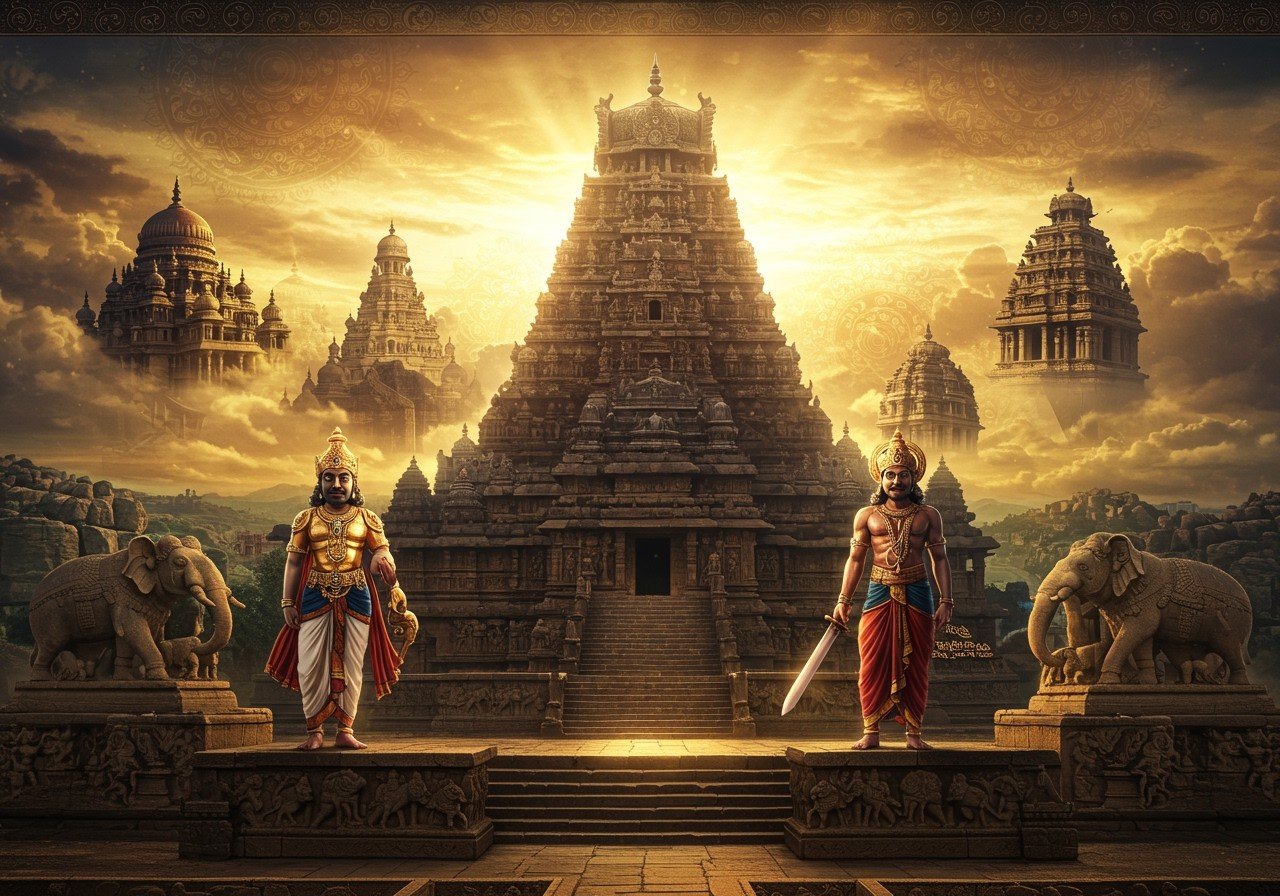
Karnataka, a southern Indian state, is renowned for its rich history and diverse culture. It has been the cradle of numerous powerful dynasties and remarkable kings who have shaped the state’s heritage. This blog delves into the intricate history of Karnataka’s dynasties and kings, offering a comprehensive overview for those who appreciate cultural roots and value tradition. Understanding the historical context of Karnataka’s rulers provides insights into the state’s development and cultural legacy.
Ancient Dynasties of Karnataka
Karnataka’s history commences with early dynasties like the Kadambas and the Gangas. The Kadamba dynasty, founded by Mayurasharma around 325 AD, significantly contributed to literature and architecture, constructing temples and promoting the Kannada language and script. They ruled till 540 AD.
The Western Ganga dynasty reigned from the 4th to the 10th century CE, known for their patronage of Jainism. Their notable contributions include the majestic Gomateshwara statue at Shravanabelagola. This era witnessed advancements in culture and administration.
Chalukya Dynasty
The Chalukya dynasty held sway over parts of Karnataka from the 6th to the 12th century CE. Pulakeshin II, a prominent ruler, is renowned for resisting Harsha’s northern expansion. The Chalukyas bequeathed architectural marvels like the temples at Badami, Aihole, and Pattadakal, now recognized as UNESCO World Heritage sites. Their reign significantly enriched art, culture, and Kannada literature.
Rashtrakuta Dynasty
The Rashtrakuta dynasty rose to prominence from the 8th to the 10th century CE. Amoghavarsha I, a notable ruler, championed literature and commissioned the awe-inspiring Kailasa temple at Ellora. The Rashtrakutas established extensive trade networks, influencing South and Central India, and achieved remarkable cultural and political milestones.
Hoysala Empire
The Hoysala Empire flourished from the 10th to the 14th century CE, renowned for its contributions to art and architecture. Vishnuvardhana’s reign witnessed the construction of magnificent temples like Chennakesava at Belur and Hoysaleswara at Halebidu. The unique architectural style of the Hoysalas has left an enduring legacy on Karnataka’s heritage. You can find puja items related to Hoysala architecture on poojn.in.
Vijayanagara Empire
The Vijayanagara Empire dominated from the 14th to the 17th century CE. Founded by Harihara I and Bukka Raya I, it reached its zenith under Krishnadevaraya’s rule. The empire served as a bastion of Hindu culture and boasts stunning structures in Hampi, including the Virupaksha Temple and the intricate Vittala Temple complex. Explore Vijayanagara-inspired puja items at poojn.in.
Wodeyar Dynasty
The Wodeyar dynasty reigned in Mysore from the late 14th century until India’s independence. Founded by Yaduraya, the dynasty saw remarkable rulers like Chikka Devaraja Wodeyar and Krishnaraja Wodeyar III. Under their patronage, Mysore experienced a cultural renaissance, with significant developments in arts, music, dance, and architecture. The Mysore Palace stands as a testament to their enduring contributions.
Modern Karnataka
Post-independence, Karnataka transitioned from princely states to a modern state within India. Mysore integrated into the Indian Union, paving the way for Karnataka’s formation in 1956. Visionary leaders like Kengal Hanumanthaiah played a pivotal role in its development. Today, Karnataka is a major hub for technology and industry, while diligently preserving its rich cultural traditions.
FAQs on Karnataka’s Dynasties and Kings: A Complete History
Which dynasties were most influential in Karnataka’s history? The most prominent dynasties include the Kadambas, Chalukyas, Rashtrakutas, Hoysalas, Vijayanagara, and the Wodeyar Dynasty. Each contributed significantly to the region’s cultural, political, and architectural landscape.
What is the significance of the Vijayanagara Empire? The Vijayanagara Empire played a crucial role in preserving Hindu culture and traditions against invasions, leaving behind a rich legacy of art, architecture, and administration.
Who established the Kadamba Dynasty, and when? Mayurasharma founded the Kadamba Dynasty around 325 AD, marking a significant turning point in Karnataka’s history.
What are the key achievements of the Chalukya Dynasty? The Chalukyas are renowned for their architectural marvels, including the temples at Badami, Aihole, and Pattadakal, showcasing their mastery of craftsmanship and artistic expression.
Discover a wide range of puja samagri and spiritual products inspired by Karnataka’s rich heritage at poojn.in. We offer authentic products to enhance your spiritual practices and connect you with the divine.
Explore our collection of agarbatti and dhoop: https://www.poojn.in/product/12105/kushal-mangal-sandalwood-puja-prayer-agarbatti-incense-stics-liberty-pack-of-6-box-100-gm-each
Find exquisite brass idols and puja accessories: https://www.poojn.in/product/9352/laddoo-gopal-astadhatu-brass-laddu-gopal-murti-laddu-gopal-pure-pital-brass-laddoo-gopal-to-worship-with-all-your-heart
Conclusion
Karnataka’s history is a vibrant tapestry woven with the contributions of its dynasties and kings. From the ancient Kadambas and Gangas to the modern era, each ruler has left an indelible mark on the state’s culture and heritage. As Karnataka progresses into the future, it remains deeply rooted in its traditions, ensuring the legacy of its magnificent dynasties and kings endures for generations to come.


